Two beads (each of mass ) can move freely in a frictionless wire whose rotational inertia with respect to the vertical axis is . The system is rotated with an angular velocity when the beads are at a distance from the axis. What is the angular velocity of the system when the beads are at a distance from the axis ?
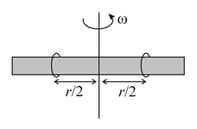

Important Questions on Rotational Mechanics
A point object of mass m moving horizontally hits the lower end of the uniform thin rod of length and mass m and sticks to it. The rod is resting on a horizontal, frictionless surface and pivoted at the other end as shown in figure.
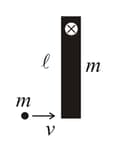
Find out angular velocity of the system just after collision.
The centre of mass of a uniform rod of length is moving with a translational velocity of on a frictionless horizontal surface as shown in the figure and the rod rotates about its centre of mass with an angular velocity of . Find out velocities .
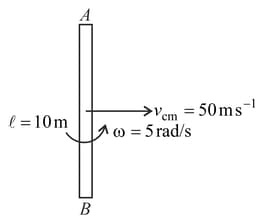
A ring of radius performs combined translational and rotational motion on a frictionless horizontal surface with an angular velocity of as shown in the figure. Find out velocity of its centre and point , if the velocity of the lowest point is .
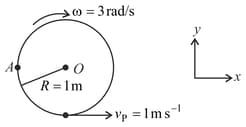
A plank is moving with a velocity of . A disc of radius rolls without slipping on it with an angular velocity of as shown in the figure. Find out the velocity of centre of the disc.
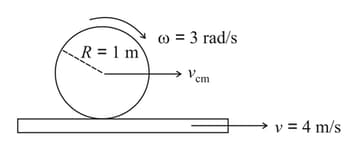
The end of uniform rod which makes angle with the floor is being pulled with a velocity as shown. Taking the length of the rod as , calculate the following at the instant when .
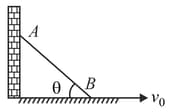
The velocity of end
The angular velocity of rod
Velocity of of the rod.
A ball of radius rolls without slipping on a horizontal plane so that its centre moves with constant acceleration ; after the beginning of motion, its position corresponds to that shown in the figure. Find:
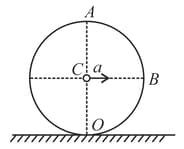
the velocities of the points
the accelerations of these points.
